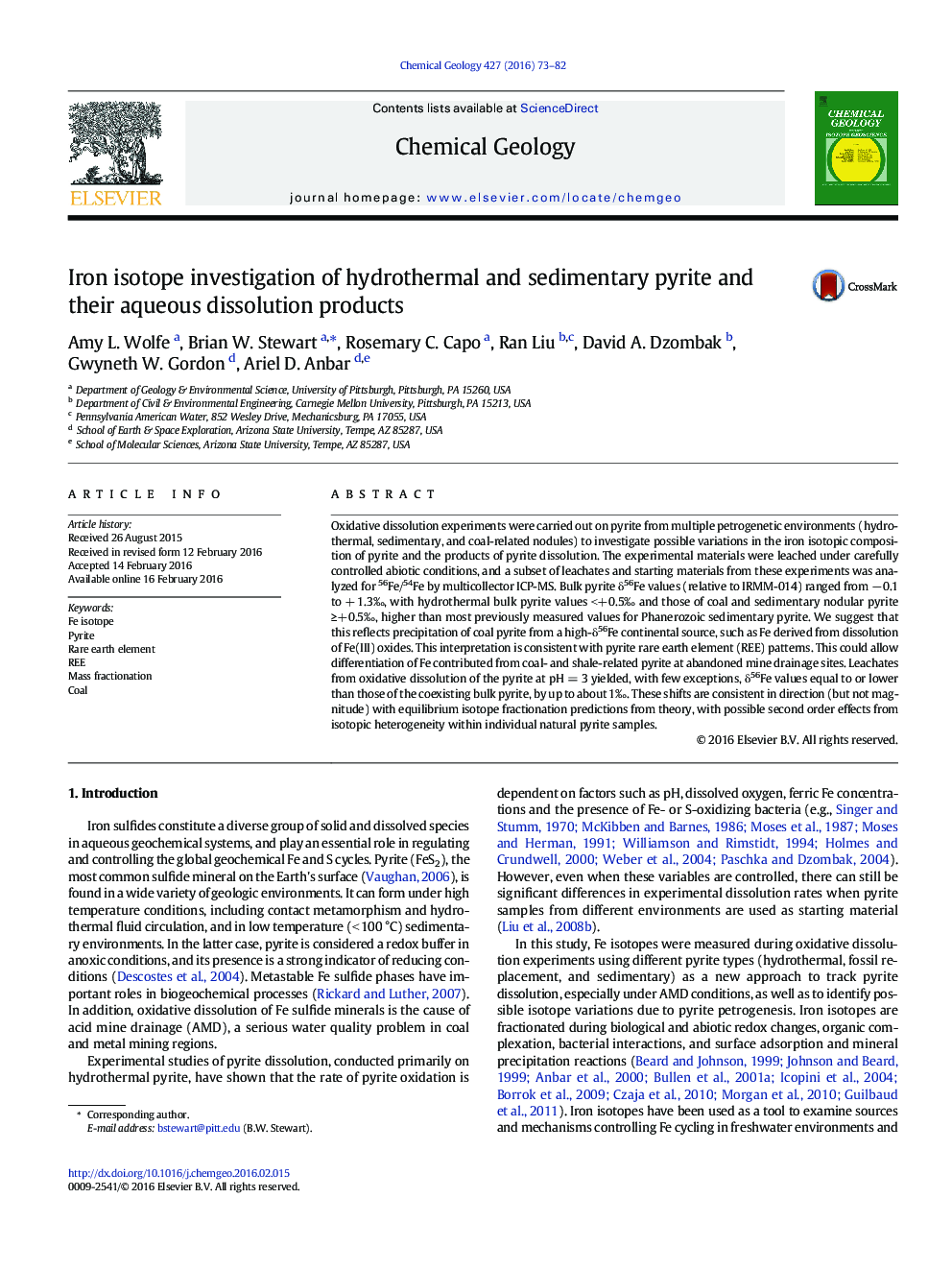| Article ID | Journal | Published Year | Pages | File Type |
|---|---|---|---|---|
| 6436141 | Chemical Geology | 2016 | 10 Pages |
â¢Iron isotope data are reported from abiotic oxidative dissolution experiments on sedimentary and hydrothermal pyrite.â¢The δ56Fe values of pyrite leachate solutions generally decreased over the course of the 24 h experiments.â¢The Fe isotope trends are consistent with equilibrium fractionation, with possible contributions from sample heterogeneity.â¢High δ56Fe values of Phanerozoic coal-related pyrite could result from a high-Fe(III) continental source.â¢Rare earth element (REE) patterns in pyrite appear to reflect the likely host rock.
Oxidative dissolution experiments were carried out on pyrite from multiple petrogenetic environments (hydrothermal, sedimentary, and coal-related nodules) to investigate possible variations in the iron isotopic composition of pyrite and the products of pyrite dissolution. The experimental materials were leached under carefully controlled abiotic conditions, and a subset of leachates and starting materials from these experiments was analyzed for 56Fe/54Fe by multicollector ICP-MS. Bulk pyrite δ56Fe values (relative to IRMM-014) ranged from â 0.1 to + 1.3â°, with hydrothermal bulk pyrite values <+0.5â° and those of coal and sedimentary nodular pyrite â¥+0.5â°, higher than most previously measured values for Phanerozoic sedimentary pyrite. We suggest that this reflects precipitation of coal pyrite from a high-δ56Fe continental source, such as Fe derived from dissolution of Fe(III) oxides. This interpretation is consistent with pyrite rare earth element (REE) patterns. This could allow differentiation of Fe contributed from coal- and shale-related pyrite at abandoned mine drainage sites. Leachates from oxidative dissolution of the pyrite at pH = 3 yielded, with few exceptions, δ56Fe values equal to or lower than those of the coexisting bulk pyrite, by up to about 1â°. These shifts are consistent in direction (but not magnitude) with equilibrium isotope fractionation predictions from theory, with possible second order effects from isotopic heterogeneity within individual natural pyrite samples.
